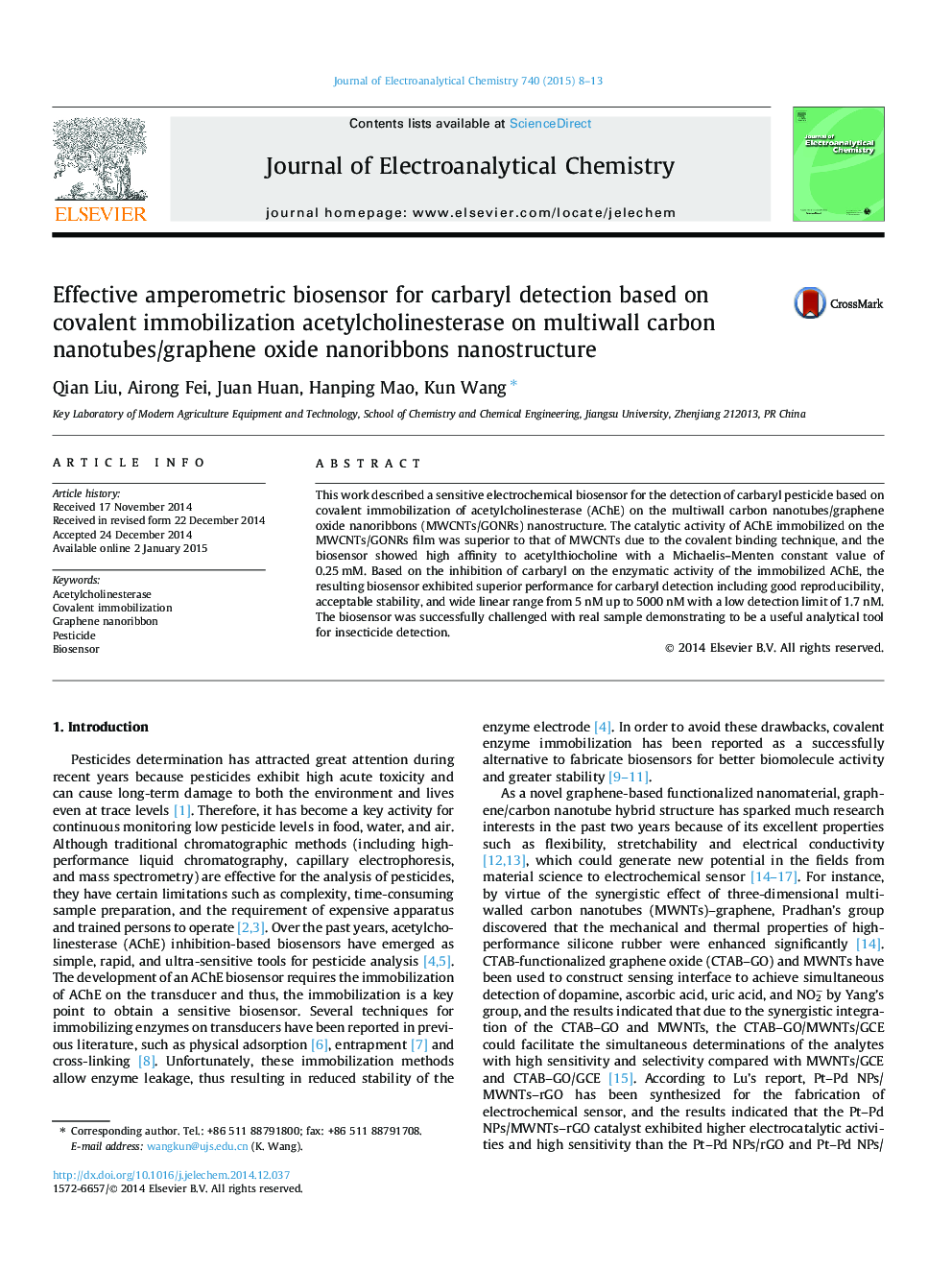| Article ID | Journal | Published Year | Pages | File Type |
|---|---|---|---|---|
| 218436 | Journal of Electroanalytical Chemistry | 2015 | 6 Pages |
•AChE was immobilized on MWCNTs/GONRs by the covalent binding technique.•The AChE on the MWCNTs/GONRs film shows better catalytic activity than that of MWCNTs.•The resulting sensor exhibits good performances for carbaryl detection.•The presented sensing platform has the merits of simple, rapid, and low-cost.
This work described a sensitive electrochemical biosensor for the detection of carbaryl pesticide based on covalent immobilization of acetylcholinesterase (AChE) on the multiwall carbon nanotubes/graphene oxide nanoribbons (MWCNTs/GONRs) nanostructure. The catalytic activity of AChE immobilized on the MWCNTs/GONRs film was superior to that of MWCNTs due to the covalent binding technique, and the biosensor showed high affinity to acetylthiocholine with a Michaelis–Menten constant value of 0.25 mM. Based on the inhibition of carbaryl on the enzymatic activity of the immobilized AChE, the resulting biosensor exhibited superior performance for carbaryl detection including good reproducibility, acceptable stability, and wide linear range from 5 nM up to 5000 nM with a low detection limit of 1.7 nM. The biosensor was successfully challenged with real sample demonstrating to be a useful analytical tool for insecticide detection.
Graphical abstractFigure optionsDownload full-size imageDownload as PowerPoint slide
